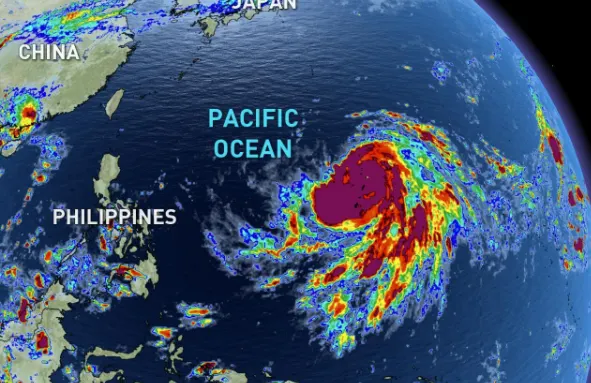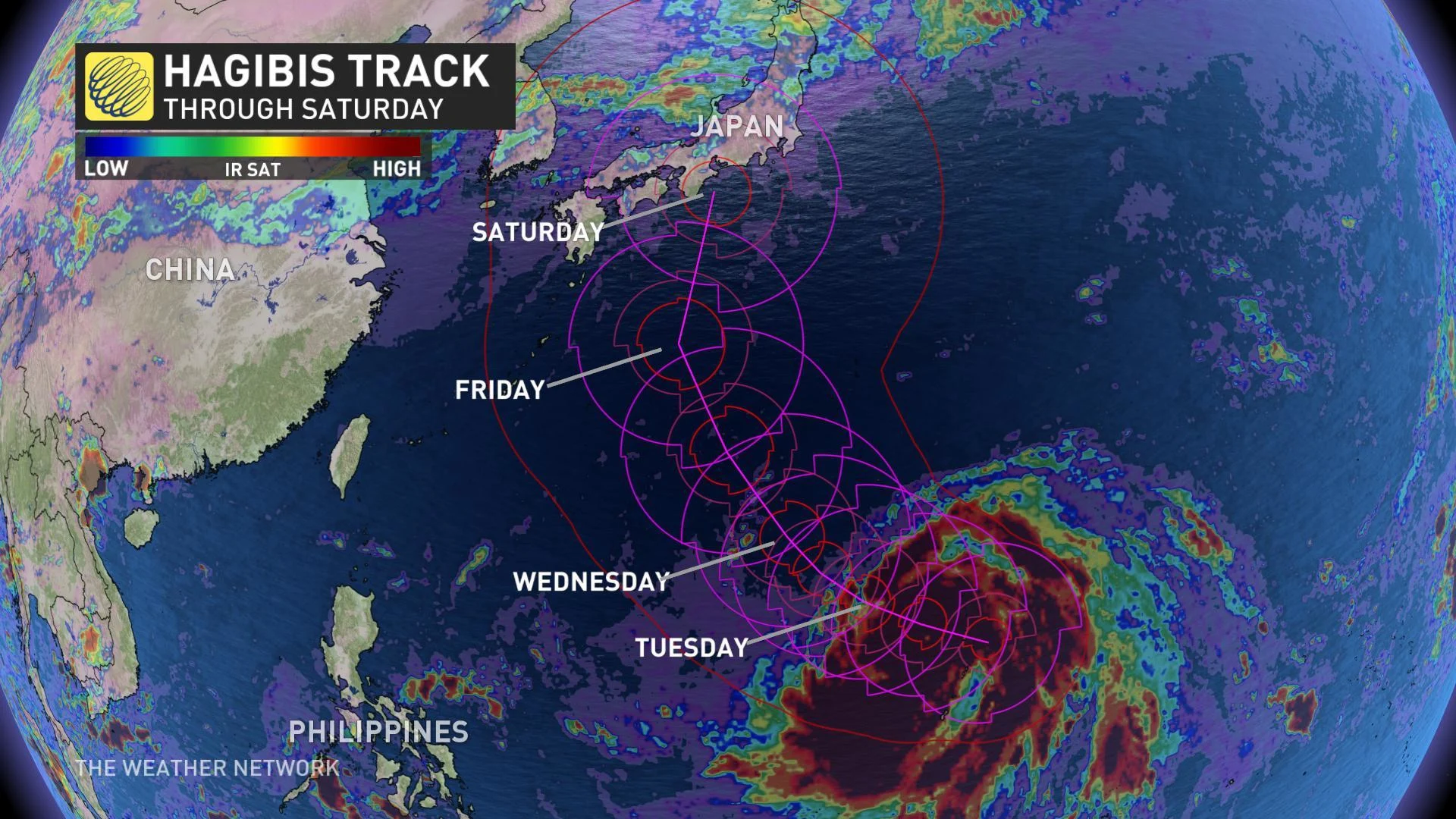
Massive Super Typhoon Hagibis currently strongest storm on Earth
The storm continues to gather strength rapidly in the north Pacific.
Currently, the strongest storm on the planet -- and on its way to possibly becoming the strongest of the year -- Super Typhoon Hagibis has gathered strength with astonishing speed. Winds in the system -- which was only tropical storm strength on Sunday morning -- surged by at least 144 km/h (90 mph) by Monday morning. All told, it took just 18 hours for Hagibis to reach super typhoon status.
Hagibis as it developed between Sunday and Monday, seen on IR satellite. Image courtesy RAAMB.
By Monday evening, local time, sustained winds had reached 260 km/h, with gusts in excess of 300 km/h. And the storm is set to strengthen even further into Tuesday.
"This is the most intensification by a tropical cyclone in the western North Pacific in 18 hours since Yates in 1996," tweeted Philip Klotzbach, a hurricane researcher at Colorado State University.
The U.S. National Weather Service issued a typhoon warning for the islands of Saipan, Tinian, Alamagan and Pagan in the Northern Marianas on Sunday, with the worst impacts from the storm expected in the region through Monday afternoon, Eastern Time. A tropical storm warning was also in effect for the islands of Agrihan, Rota, and Guam.
Hagibis is set to bring strong winds and torrential rainfall to the Northern Marianas, a U.S. territory, through Tuesday, Eastern Time. Flash flooding and high surf are also likely in Guam as the centre of the storm passes to the north.
From there, models diverge somewhat on the eventual path of the storm, but the official track takes it on a path close to Japan's main island by the end of the week. Given the expected trajectory and strength of this storm, Weather Network meteorologists say it may eventually influence the weather in western North America in the long range.

Check back often for updates as we continue to monitor this storm.
